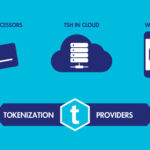A smart meter is an electronic system that tracks electrical energy usage at intervals of one hour or less. The data is reported back to the control and billing service provider. Global Smart meter supports the dual way of communication between the meter and the control system. Traditional meters only calculate usage, giving no further data breakdown. But smart meters calculate site-specific data, enabling providers to measure individual consumption rates. If the production of electricity is limited, the cost may vary depending on which the smart meters will charge the consumer.
Global Smart meters would replace traditional electric meters, as national grids become more flexible and adaptive to renewable energy sources. Via a built-in monitor, a smart meter provides a variety of advanced functionality. A smart meter provides the capability of reminding customers how much energy they have consumed. The smart meters drop the need for personnel to visit individual houses for meter readings. Global Smart Meter does this by transmitting out a signal that sends the meter reading to the energy provider, much like a cell phone signal. It also operates the other way around, enabling the provider to send back billing data to its customers.
The usage of time-of-use tariffs is a significant aspect of the transition from a conventional meter system to a smart meter system. These are different from the existing electricity bills sent out to consumers. Here the energy usage is distinguished into different time frames, each of which has different price blocks. This helps providers to create tariffs with lower rates suited to ‘off-peak’ times and encourages consumers to change their usage timing to when it is more affordable. For instance, when people come home from work, they turn on lights, make a cup of coffee, but would not immediately turn on the washing machine. Using time-of-use tariffs to wait for an off-peak time to switch on the washing machine would be more helpful as it would cost less in that time frame.
All European countries have adapted to smart meters or are starting to. The smart meter is the major gateway in the evolution of energy. Service providers need to take into consideration the phasing out of nuclear power, rising electric vehicle use, local energy generation, and heat pumps. Since 2009, Europe has proposed the smart metering systems by the Member States. It is because to promote the active involvement of consumers in the energy supply market.
The European Energy Efficiency Directive (2012) also includes the implementation of smart meters. In 2014, Brussels law made it mandatory to install a smart meter in new buildings. Global smart meter adoption in Europe and North America was around 50% and 65% in 2019. In both countries, this figure projects to reach 70% by 2024. In Asia, projects are escalating. With India planning to install more than 250 million smart meters soon.
The overall growth dynamics for the Smart Meters market can be analyzed using Global Market Database. The technology employs Dynamic Market Data (DMD) as its core to study the shift in line with changing market trends. The upcoming technologies and their implications on the Global Smart Meters market can be studied using Global Market Database. GMD is a cloud-based market research tool that produces a market database across 600+ verticals within 12 different industries. Global Market Database serves as a free market research tool for the first 5 GMD logins.
The Smart Meter National Program (SMNP) reported in 2018 a replacement of 250 million conventional meters in India. These smart meters linked via a web-based control system helps to cut industrial energy losses, boost profits. It acts as a significant tool in India’s energy sector reforms. The smart meters of Energy Efficiency Service Limited (EESL) have modernized the existing manual cost recovery process. This has resulted in lower billing and poor collection efficiencies in India. The program introduced under the BOOT model ensures that all Capex/Opex handled by EESL do not need upfront investment.
EESL signed MoUs with the states around India for the prepaid meter system. These states include Andhra Pradesh, Uttar Pradesh, Haryana, Bihar, NDMC-Delhi, Rajasthan, Telangana. NDMC is the first service provider to have all its customers with smart meters. EESL’s smart metering program made this possible. In India, NDMC was the first municipal council to introduce a 100% smart meter system in its region. EESL achieved a deployment phase of 1.5 crore smart meters under this program. EESL has deployed over 13.2 lakh smart meters to date in Uttar Pradesh, New Delhi, Haryana, and Bihar.
The current COVID-19 pandemic and the declining business of power distribution companies (DISCOMs) have demonstrated a need for a smart meter. Regulations on social distancing have forbidden DISCOMs from processing electricity bills. Since traditional metering services need personal verification of readings. Technological and commercial losses have left DISCOMs in a difficult position. Low tariffs and other internal shortfalls have also affected the DISCOMs. Smart meters are the solution as they need minimal direct social contact. Other advantages are further achieved across the entire value chain of energy.


